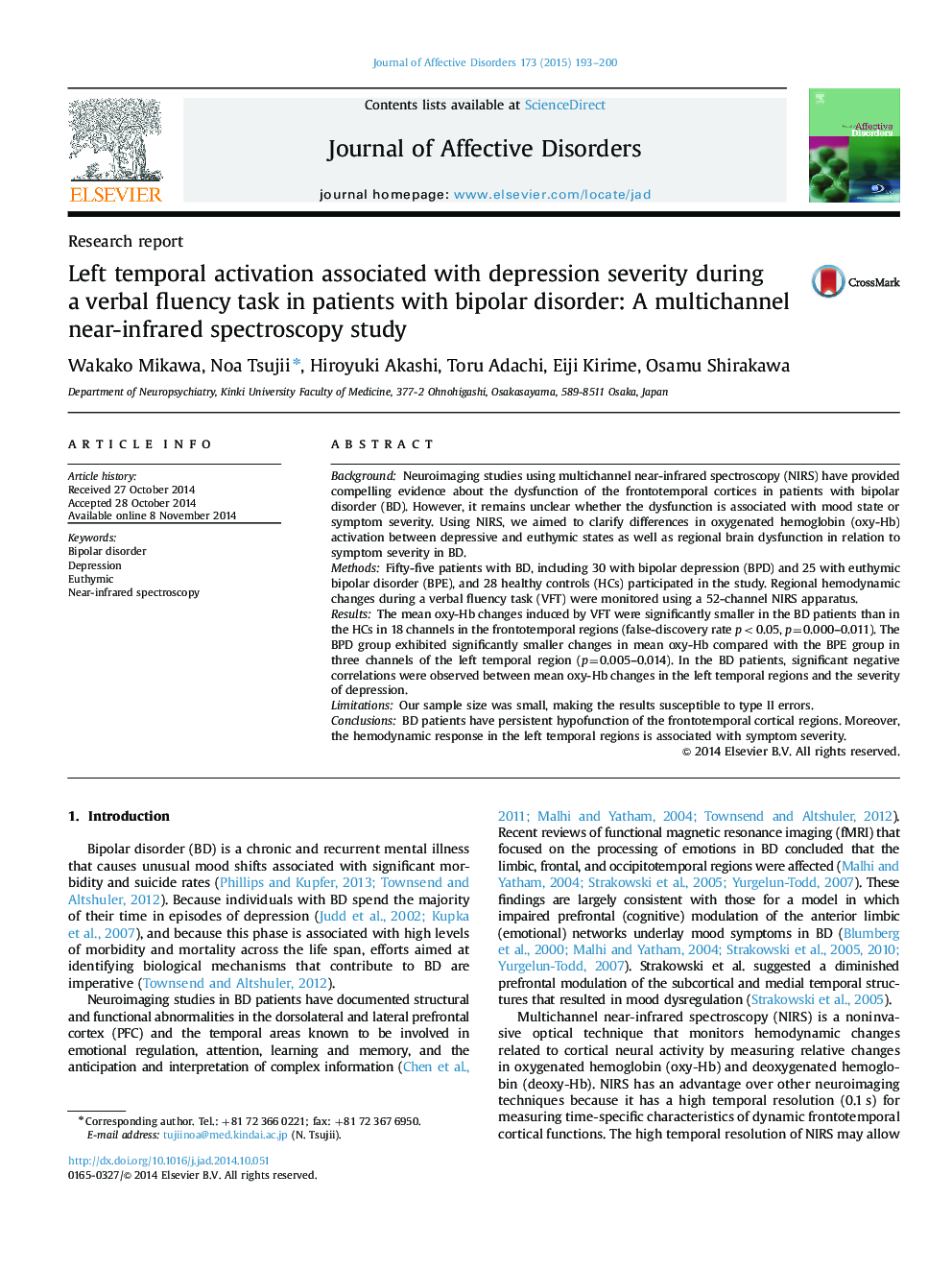| Article ID | Journal | Published Year | Pages | File Type |
|---|---|---|---|---|
| 6231883 | Journal of Affective Disorders | 2015 | 8 Pages |
BackgroundNeuroimaging studies using multichannel near-infrared spectroscopy (NIRS) have provided compelling evidence about the dysfunction of the frontotemporal cortices in patients with bipolar disorder (BD). However, it remains unclear whether the dysfunction is associated with mood state or symptom severity. Using NIRS, we aimed to clarify differences in oxygenated hemoglobin (oxy-Hb) activation between depressive and euthymic states as well as regional brain dysfunction in relation to symptom severity in BD.MethodsFifty-five patients with BD, including 30 with bipolar depression (BPD) and 25 with euthymic bipolar disorder (BPE), and 28 healthy controls (HCs) participated in the study. Regional hemodynamic changes during a verbal fluency task (VFT) were monitored using a 52-channel NIRS apparatus.ResultsThe mean oxy-Hb changes induced by VFT were significantly smaller in the BD patients than in the HCs in 18 channels in the frontotemporal regions (false-discovery rate p<0.05, p=0.000-0.011). The BPD group exhibited significantly smaller changes in mean oxy-Hb compared with the BPE group in three channels of the left temporal region (p=0.005-0.014). In the BD patients, significant negative correlations were observed between mean oxy-Hb changes in the left temporal regions and the severity of depression.LimitationsOur sample size was small, making the results susceptible to type II errors.ConclusionsBD patients have persistent hypofunction of the frontotemporal cortical regions. Moreover, the hemodynamic response in the left temporal regions is associated with symptom severity.
